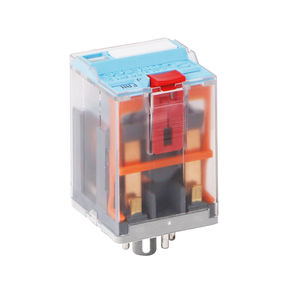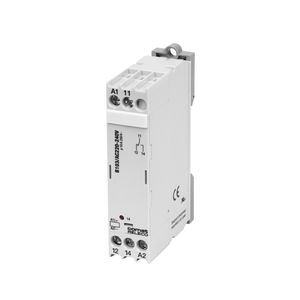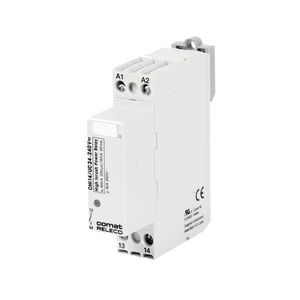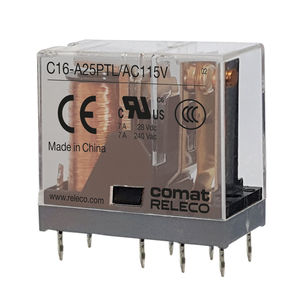
Electromechanical contactor RIC16-010semiconductorACDC


Add to favorites
Compare this product
Characteristics
- Technology
- electromechanical, semiconductor
- Electrical characteristics
- AC, DC, multipole
- Contact configuration
- 1 NC
- Applications
- electronic
- Other characteristics
- DIN rail, IEC
- Primary current
16 A
- Load voltage
400 V
Description
ComatReleco offers a wide range of relay types and versions and associated sockets and accessories.
35 x 35 mm round plug-in relay, 8- or 11-terminals multipole connector according to IEC 67 with 2 or 3 contacts up to 10 A and different contact types and contact materials.Standard relay 35 x 35 mm with flat blade connectors with up to 4 contacts and up to 16 A with 4 contacts.
Overall width 13 mm with up to 2 electromechanical contacts, or fully electronic switches.
While "normal" relays are monostable, i.e. they return to the idle state when the excitation is switched off, remanence relays are bistable, i.e. the current switching state is retained irrespective of the excitation. Relays of this type are available in different versions.
CSS Relays are suitabe to either switch AC or DC loads up to 6 A. For AC relays a distinction is made between synchronously (zero crossing) and asynchronously switching versions. For switching transformer loads we recommended using asynchronously switching semiconductor switches. For incandescent lamp loads etc. synchronously switching switches are ideal for avoiding high switch-on currents.
Suitable sockets are available for the different relay series for DIN rail mounting or panel mounting. In addition, retaining clips are available for the relays, some of which are included in the scope of supply. Suitable bridges for cost-saving wiring in series are also available.
Catalogs
GENERAL CATALOGUE
400 Pages
Related Searches
- Single-pole switch
- Switching relay
- Protection relay
- Contactor
- Monitoring relay
- Time relay
- Electromechanical relay
- DC electromechanical relay
- DIN rail monitoring relay
- SSR
- AC contactor
- DIN rail protection relay
- Electric motor protection relay
- DIN rail mounted time relay
- Multipole contactor
- DC SSR
- AC electromechanical relay
- Control relay
- Thermal protection relay
- Power relay
*Prices are pre-tax. They exclude delivery charges and customs duties and do not include additional charges for installation or activation options. Prices are indicative only and may vary by country, with changes to the cost of raw materials and exchange rates.

















